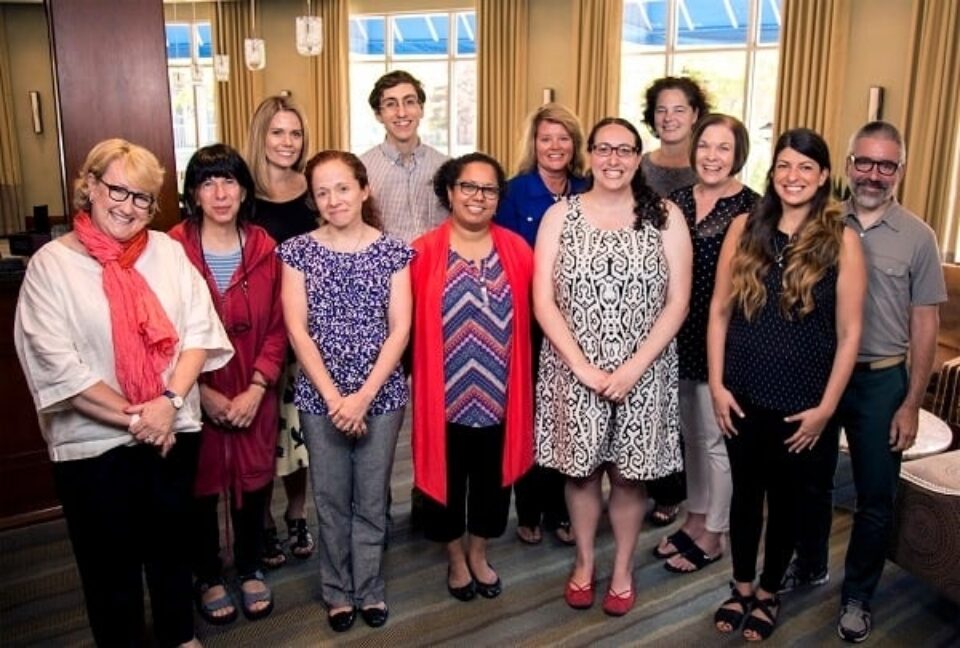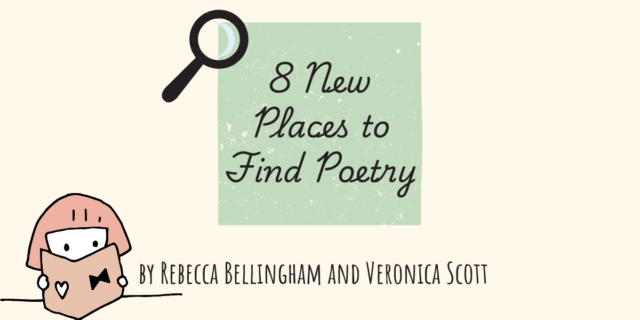
Jessica Lifshitz is a Heinemann Fellow with the 2014–2016 class, and has been an educator for 11 years. In today's post, Jessica describes how one of her students developed a love of reading because she was able to set her own reading goals. Read on!
Rethinking Reading Goals: More Than Just a Number
by Jessica Lifshitz
This past school year, my action research allowed me to focus on the following question: What are the most effective instructional tactics to help students develop their own goals as readers? As I look back on what I have learned this year, the story of one of my students is emblematic of the changes throughout all of the students in my classroom. That story is the story of Reese.
Reese entered my classroom as an anxious and hesitant reader. At the start of the school year, Reese was unsure of how to select books, and once she did choose a book, she proceeded to its pages with extreme caution. For the first few weeks of school, most of my reading conferences revolve around getting to know my students as readers. What I quickly learned about Reese, and about many of my students, was that she had been shaped as a reader by the reading goals set for her in the past.
I tried to understand what was stopping Reese from fully embracing a readerly life, and I noticed that she kept bringing up one assignment from the year before. In Reese’s fourth grade class, the students were expected to read twenty books over the year, and there was a certain number that had to be from specified genres. Reese spoke openly about how much anxiety this caused her. Reese is an exceptionally bright child, but she is also a student who worries constantly about meeting the expectations that are set for her by teachers. So when she knew that she had to read twenty books during the school year, what concerned her most was being able to finish the required number of books in time. Thoughts of not being able to finish and not being able to meet the set requirements caused her extreme anguish and anxiety.
All that Reese could do with this goal was complete it, so that her teacher would be satisfied.
So Reese chose the shortest books that she could find, and she read them with one goal in mind: to get to the end. That way she could list it on her reading log and she would be one step closer to accomplishing her reading goal for the year. Reese had no say in the goal that was set for her. Everyone in her class was to read the same number of books. Reese felt no ownership of this goal. All that Reese could do with this goal was complete it, so that her teacher would be satisfied.
Reese was certainly motivated to read in fourth grade. She was motivated to complete the assignment given to her. She was motivated to please her teacher. She was motivated to comply. But that kind of motivation cannot thrive outside the classroom. That kind of motivation does not last a lifetime. Motivation to comply is almost like a false motivation because it is completely dependent on having a teacher to set the goal for you.
This shaped Reese as a reader. It made her anxious and uncertain. In the end, it made her dislike reading.
Reese and I worked together to help her redefine her reading goals. Instead of focusing on the number of books Reese read, I wanted to focus on what she noticed as she read. I wanted Reese to slow down, not to speed up. I wanted her to feel that incredible feeling of finding yourself in a book, or better understanding someone else through a book. I wanted her to get hooked on that experience that lifelong readers know of having your heart and soul touched by a book.
At first, Reese was only willing to read graphic novels. I met her where she was and we conferred for several weeks as she read her way through the first three books of the Amulet series of graphic novels by Kazu Kibuishi. At some point in those first conferences, I worked with Reese to set her first reading goal of the year. Instead of setting a goal about reading quantity, Reese set a goal that centered on what she was noticing and what she wanted to find out.
My first conversations with Reese as a reader focused on the plot of the book she was reading. I tried to pull her out of the plot a little bit by asking her what she was noticing. At first she was uncertain. She was not used to paying attention to anything other than how many pages were left.
"So what have you noticed about your book?"
Things started to change. While Reese was working on reading Amulet, I asked her, “So what have you noticed about your book?”
And she had an answer. She said, “I noticed that the pictures in the graphic novel give you more information than even the words.” And that was enough. I jumped on her own words and helped her to mold this observation into a goal that she could work on as she continued to read through the book. We crafted Reese’s first goal: “I will pay attention to the pictures in a graphic novel to notice which pictures give me important information that helps me to better understand the story. I will describe what is in the picture and what thoughts the picture leads me to.”
Every time I worked with Reese in a reading conference, I looked for moments of brilliance. I looked for areas of insight and interest and then I helped her construct a reading goal that would allow her to follow her own line of inquiry. These co-constructed goals allowed Reese to take as much time as she wanted in order to deeply investigate the parts of her texts that resonated with her.
Over time, Reese became our class expert on reading the pictures in a graphic novel. She taught the rest of the class about the work that she was doing around her reading goal. She ran a guided reading group for other students interested in working on similar goals in similar texts. She wrote and published a blog post about the work she was doing around this reading goal.
In this early blog post, you can see Reese’s hesitation. She clings to the plot. Her reading isn’t yet joyful. She has not yet allowed reading to move her and to change her. These changes take time. Old habits have a strong grip so change cannot happen right away. Our students need time.
With time and the focus of co-constructed goals, Reese found confidence in reading. She became willing to try different books, knowing that she would have the freedom to abandon them if they did not work for her. She began selecting more complex texts. As her texts became more complex, so did her reading goals.
The last book that Reese read during the school year was Lynda Mullaly Hunt’s Fish in a Tree. Her goals for this book were a far cry from her first reading goal. They reflected the deep thinking that Reese did as she read. These goals were not set before Reese began reading her book; they were set by her as she read, as they felt meaningful to her understanding of the text. As she began to discover the things in her text that she wanted to know more about and wanted to understand more deeply, she set goals that would help her to get there. Here were Reese’s three reading goals at the end of the school year:
- I will pay attention to what the main character, Ally, is hiding from the people who are in her life and why she is hiding those things from them. I will think about her motivation for hiding things even from people she trusts.
- I will pay attention to the moments in the text that cause Ally’s self-confidence to go up and the moments in the text that cause Ally’s self-confidence to go down to see if Ally is becoming more willing to take risks as the book goes on.
- I will pay attention to what each character brings to Ally’s life in both positive and negative ways to help me understand why the author put each of these characters into the book.
There is no standardized test that could ever tell me more about how much Reese grew as a reader this year than I can tell just by looking at the change in Reese’s reading goals and reflections from the start of the year to the end of the year. Nothing could be more powerful in reflecting the growth that Reese made as a reader than looking at the writing that Reese did about her last few reading goals.

Reese's first blog post for Fish in a Tree.
In this writing, Reese shows that she is now able to look at a character as a real person and notice the things about that person that she does not quite understand. We see that Reese holds on to her thoughts as she reads and as she gets to know her characters better. We can also see the way that Reese is able to think about how the character of Ally is influenced by her life and her situation and how those influences motivate Ally to make choices that are difficult for Reese, herself, to understand.

Reese's second blog post for Fish in a Tree.
In Reese’s second blog post about this book, Reese’s letter to the characters shows that she cares for the novel’s characters and is rooting for them. Reese is able to feel deeply for her characters because she is giving herself the time to think deeply about her characters.
What this tells us as teachers is that the types of goals that we set with our students matter. They matter in the messages that we send to a child about what it means to be a reader. When we change the kinds of goals that we set for our students, we start to change our students as readers and we can create better readers by creating better reading goals.
And so, at the end of this year, I saw a very different reader leave my classroom than the one who entered it. Reese now knows the joy of reading. She knows that books can change a person. She knows that they can make you fall in love with characters. She knows that reading is something worth doing. And that is the kind of reading motivation that lasts a lifetime.
♦ ♦ ♦ ♦

Jessica Lifshitz is a fifth grade teacher at the Meadowbrook Elementary School in Skokie, IL. Her action research question as a fellows is, "What are the most effective instructional tactics to help students develop their own goals in narrative texts?"


